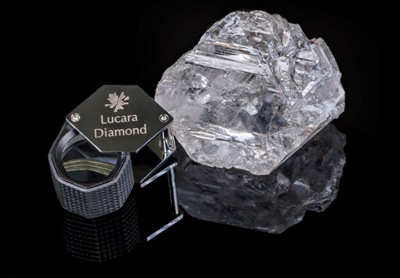
The National Post is Canada’s second largest national paper.
A Canadian mining company has recovered a diamond for the ages. The astounding stone has no precedent in the past century and will command a massive price at auction. The only question is how high it will go.
Lucara Diamond Corp. said it recovered a gigantic 1,111-carat, gem-quality diamond from its Karowe mine in Botswana this week. To put that in perspective, it is believed to be the second-largest gem-quality stone ever found. The only one known to be bigger is the legendary Cullinan diamond, which was recovered in South Africa in 1905 and weighed 3,106.75 carats.
























